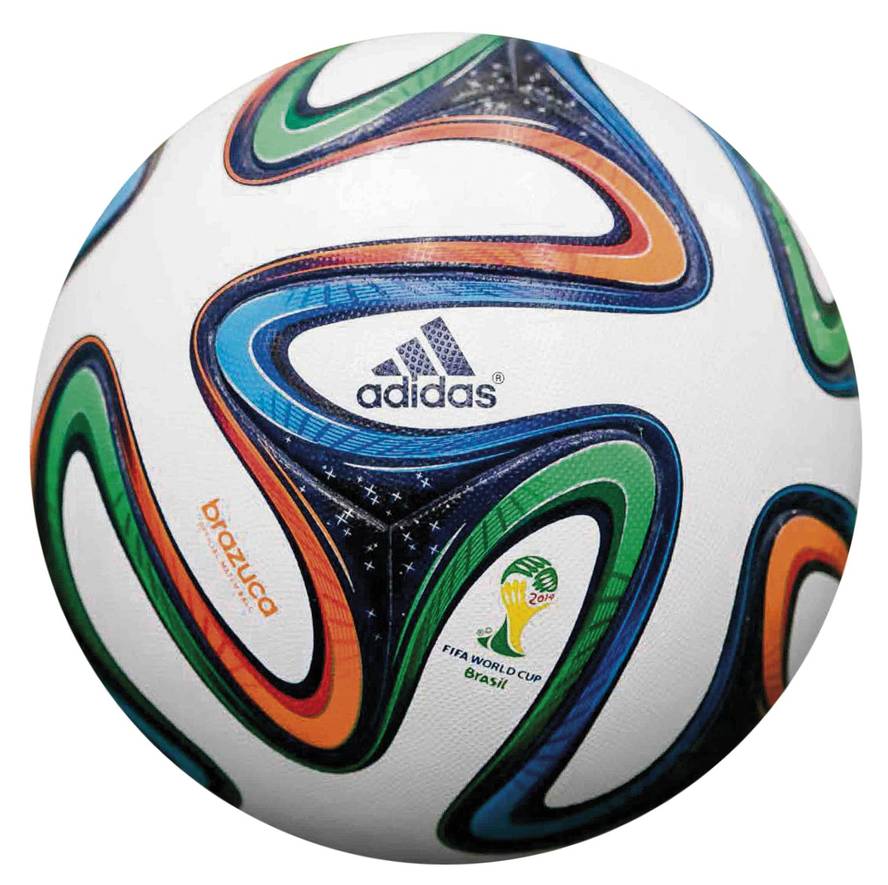Platonic balloons
From a mathematical point of view, "football balls are very attractive", says the mathematician of the UPV José Ignacio Royo Prieto. Far from the whirlpools, hobbies and platonic loves that emerge around football, mathematicians see the faces, edges and vertices on which the balloons are based. It is basically polyhedra inflated by air, which are "very beautiful structures".
Like the Brazuca ball of this year's World Cup is a bucket blown air at the base, they can be transformed into polyhedra of all kinds. However, "a certain group of polyhedra, the platonic polyhedra and their derivatives, have been the most successful in making the ball. They are called platonics because they were described in the book Timeo de Plato, but before they were known," explains Rovo. The peculiarity of these polyhedra and their advantage for the manufacture of balloons is that they are totally regular. On the one hand, in all vertices the same occurs, that is, the same number of edges and faces are joined. On the other hand, all the faces that form the polyhedron are equal, that is, they are formed by a single type of polygons. In addition, polygons are regular, that is, they have all equal sides and angles between the sides as well.
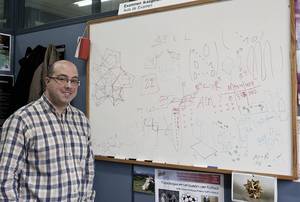
Royo has emphasized that, being so regular, "it is easier to manufacture balloons on a large scale from them. The modists do not need to know what a polyhedron is, the only thing you have to know is how many pieces you have to sew. With this simple rule the ball is created". To give a value to the production of handball, a data: 13 million units sold from the 2010 World Cup.
Only five polyhedra present all the characteristics of the platonics. The union of the triangles allows the formation of three forms: the tetrahedron, 4 triangles joined by three; the octahedron, 8 triangles joined by four, and the ikosaedro, 20 triangles joined by five. With squares you can build the cube (6 squares grouped from three to three) and finally the dodecahedron is formed by 12 pentagons grouped from three to three.
Bucket, base of old balloons
In the oldest balls of football, the XIX. From the twentieth century until the mid-twentieth century, cubic structures predominate. From this basic structure of six square faces numerous variants emerged. Sometimes, for example, to form each face three rectangular pieces were joined, forming the cube with 18 pieces.
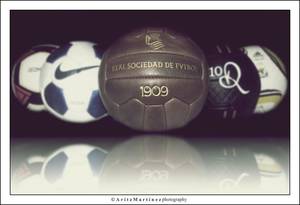
Of this structure of 18 pieces another was derived, replacing the rectangular pieces with others in T. Thus, a one-sided strip forms the upper horizontal line of the T and the leg of the T occupies half of the central strip of the side face.
All these transformations have as objective, as Royo explained, "give the maximum balance to the ball and for this, once inflated, the ball is as spherical as possible". And it is that, from a technical point of view, the ball must be balanced, when launching, "so that the movement is as normal as possible, the closest to what a particle would have. If the ball is unbalanced, its movement is more complex and that is bad for those who play."
As the structure of the ball is made in pieces and the pieces are harvested, "we must take into account the edges that are formed in the seams", said Royo. This is because when inflating the ball the edges do not move, since they are not as flexible as the rest of the material, which can cause abombations or imbalances that can cause unexpected effects. Therefore, the mentioned variants were solutions designed so that when inflating the ball and curving the pieces were as spherical as possible. For example, when curved, T-pieces are closer to the shape of a sphere than to rectangular pieces.
Star in the stars, hexagon ball and pentagon
Despite the advances, the cube is not the closest form to the sphere and in the evolution of balloons other basic structures were invented. The ball created for the 1970 World Cup, the Telstar, was a milestone. "Since then the polyhedron made up of hexagons and polygons has become the archetype of the vast majority of football balls. It was a great step towards the roundabout of the balloons, which occupies 86% of the sphere without this polyhedron being inflated by the air," says Royo.
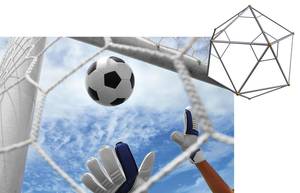
This polyhedron, known as cut ikosaedro, consists of 12 pentagons and 20 hexagons. It is not platonic polyhedron, since it is formed by two types of polygons, but it comes from a platonic, ikosaedro. If we took an icosahedron of rubber or cheese and cut each of the vertices in which five faces meet, these would become pentagons and triangles in hexagons. The rest of the characteristics are the same as those of the platonic polyhedron, that is, all the polygons are regular and in all the new vertices the same happens. Thus, they create a new family of polyhedra derived from platonic polygons: Archimedian polygons.
Therefore, the use of Archimedian polygons in the manufacture of balloons “has the same advantages as Platonic polyhedra, so its manufacture is simple. It seems that with the cut icosahedron they achieved the greatest balance between the firmness and the complexity of manufacturing". And it is that there are polygons with more resounding than it, like the ronvicosidecaedro that is formed with the combination of pentagons, squares and triangles, which occupies 94% of the sphere without filling, but it is more complex to produce because it has 72 pieces and 120 seams, and "has not been successful in ballooning, probably because it would be too expensive", says the mathematician.
--> Evolution of the balls of Adidas for the World Cup from 1970 to the present
Modern balloons, little seam and many thermal treatments
The problem of seams, and in general the limit of polyhedra, "today it is overcome and it is not difficult to complete the spheres with parts of all kinds. The balloons are made with other materials, such as plastics, which are more flexible than leather and which with heat can adopt any form". Therefore, the pieces do not have cubes, hexagons or pentagons. In addition, the union between pieces is also thermal, so there is no sewing.
In the case of the ball Brazuca, for example, it is formed by six stars of four arms that when gathering them thermally form a perfect sphere. It lacks own traces of polyhedra and seams. But as some polyhedra can become spheres, the spheres, continually deforming them, can become polyhedron. By doing this exercise, that is, by simultaneously treading the six pieces, at the base of Brazucca you can see a cube from the topological point of view. In topology it does not matter that the edges of the faces forming the polyhedron have a straight or curved line; it only takes into account the structure, which are joined by three", says Royo. In short, the most modern balloons are also based on geometry.
--> See how Brazuca is made
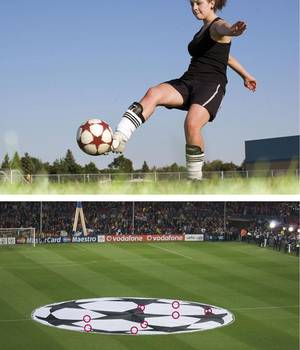
"This entry #Scientific Culture 2. Participate in the festival"



